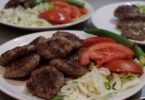Simon Urwin
Plov – a medley of rice, vegetables, meat and spices – is popular throughout the countries of the Silk Road, but it’s most closely associated with Uzbekistan. Widely consumed at least once a week, it’s the country’s national dish and is considered an indispensable part of family celebrations, served at births, weddings and funerals and to honour Muslims returning from Hajj.
According to legend, plov was first invented for Alexander the Great, who ordered the creation of a satisfying meal to sustain his army during their campaigns in Central Asia. “We don’t have historical records to prove that, but what we do know is that by the 9th and 10th Centuries, plov had become very popular here,” said Nilufar Nuriddinova, an Uzbek tour guide who is passionate about food history. “Rice has been a staple crop in this region for more than 1,000 years. It requires hard physical work to grow, as does harvesting crops and raising livestock. So, plov would’ve been an ideal high-calorie, nutrient-rich dish for the largely agricultural society.”
Plov is now considered such a vital part of the country’s culinary traditions that it was recently inscribed on Unesco’s Intangible Cultural Heritage of Humanity List. “It is more than just a meal,” Nuriddinova explained. “It creates social bonds and encourages friendship; it brings our nation together.”
She told me even the word is an important part of the Uzbek language. “It appears in many everyday expressions such as, ‘If you know you have only one day left on Earth, spend it eating plov,'” she said. “It means that afterwards you can die happy. In Uzbekistan, life without plov is unthinkable.”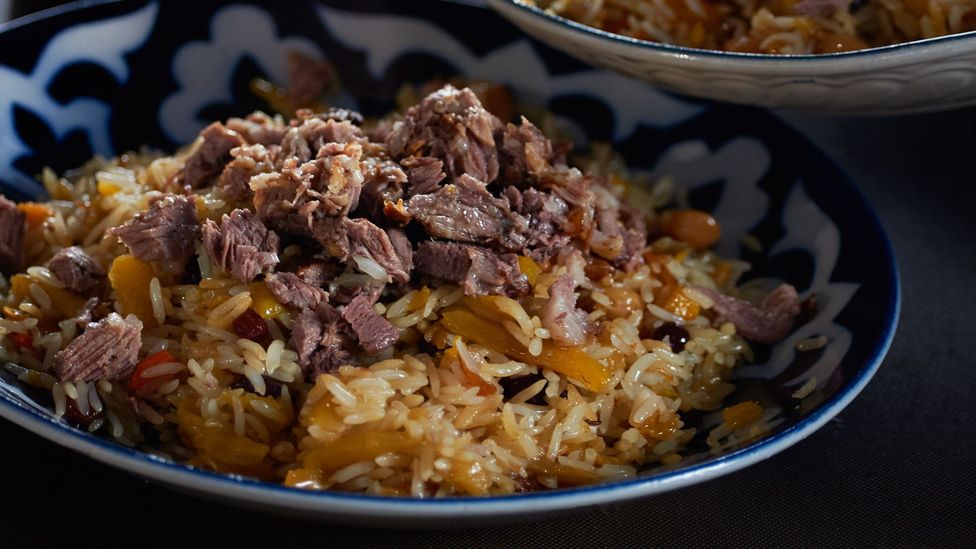
There are more than 100 types of plov in Uzbekistan. Recipes differ according to the region and the season, but each variation contains key ingredients whose initials gave the dish its full name, osh palov: “o” for ob (water in Persian), “sh” for sholi (rice), “p” for piyoz (onion), “a” for ayoz (carrot), “l” for lamh (meat), “o” for olio (fat or oil), and “v” for vet (salt).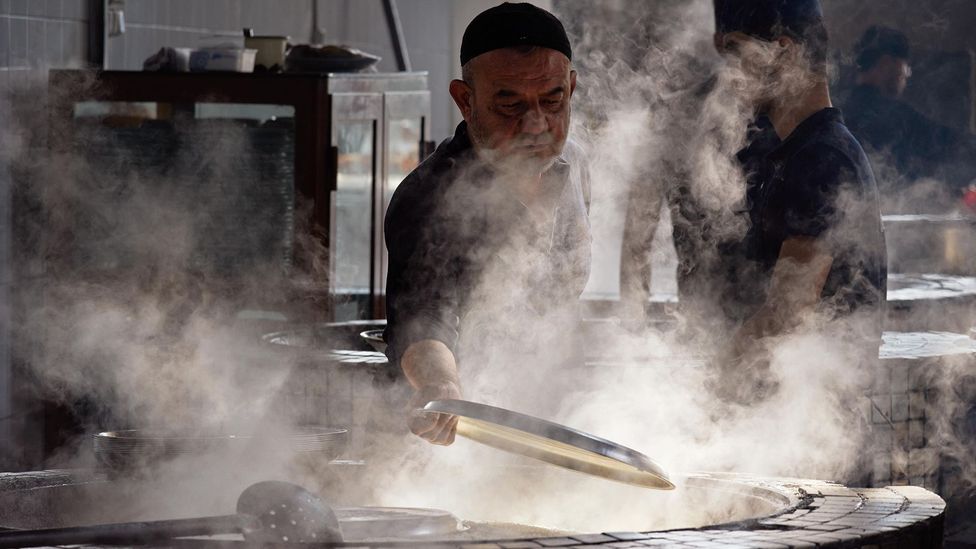
The country’s most famous plov restaurant is Besh Qozon (also known as the Central Asian Plov Centre), located in the Yunusabad neighbourhood of the capital, Tashkent. Thought to be one of the largest plov restaurants in Central Asia, Besh Qozon serves between 5,000 and 8,000 customers daily, with plov made in nine vast wood-fired cauldrons known as kazan.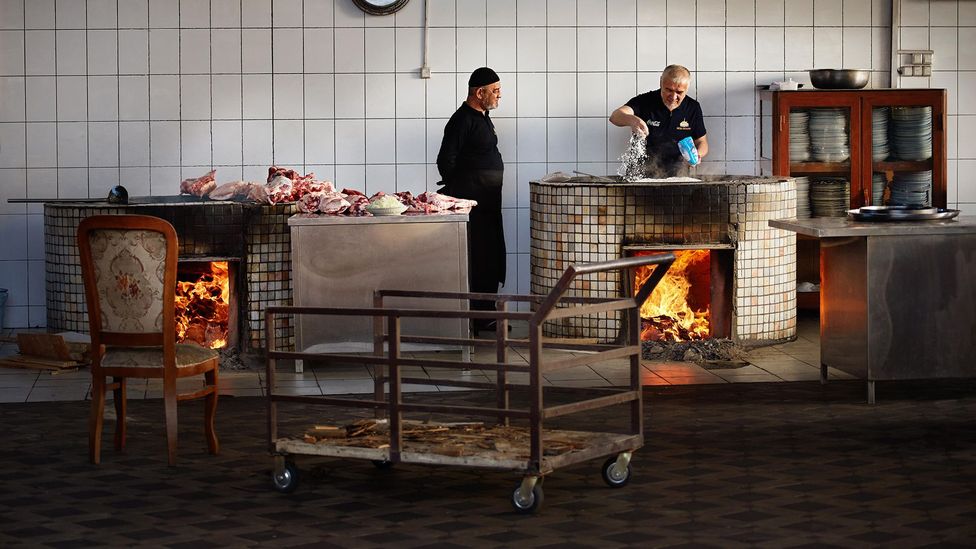
According to Uzbek tradition, every plate of plov must be accompanied by non (bread). Besh Qozon’s resident nonvoy (baker) is Shokirjon Nurmatov. Like all kitchen staff, he performs a special ritual before beginning work: he purifies himself, joins his hands together in the shape of a bowl and asks for a dua (blessing from Allah) to do his job successfully. Only then can he begin producing his daily batch of more than 3,000 loaves.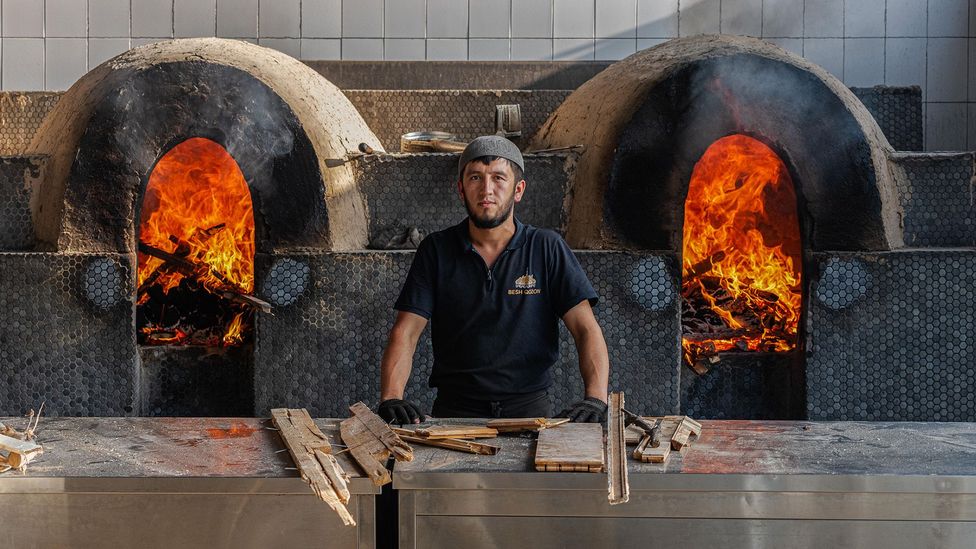
In the family home, plov is traditionally made by women; in restaurants (and on special occasions), it’s the reserve of a male chef known as an oshpaz. “That’s because it’s tough physical work to produce huge quantities,” said Fayzullah Sagdiyev, the oshpaz at Besh Qozon. “My largest kazan can hold up to three tonnes of food.” He told me he faces other even greater pressures. “If a guest doesn’t finish their plov because they don’t like the taste, it’s considered so shameful that the oshpaz may consider taking their own life,” he said. “Thankfully, it’s never happened to me.”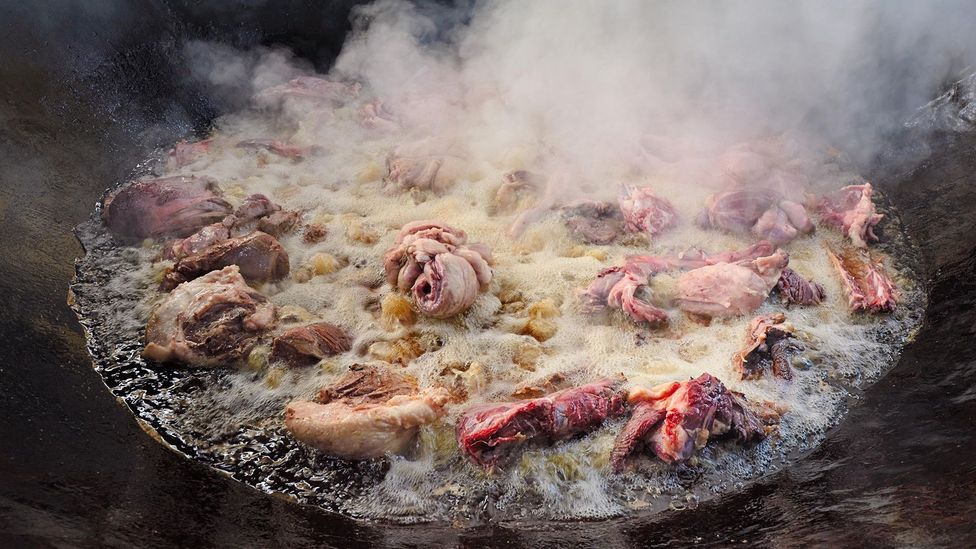
The process of cooking plov follows a strict order: it begins with the browning of meat (a mix of mutton and beef), before the addition of white and yellow carrots, onion, rice, water and spices. Sagdiyev uses a mix of salt, pepper, turmeric and principally cumin – which first arrived in Uzbekistan from India along the Silk Road. A local touch to Besh Qozon’s chaykhana plov is the addition of chickpeas and kishmish (a sour raisin)before it is slow-cooked for four hours.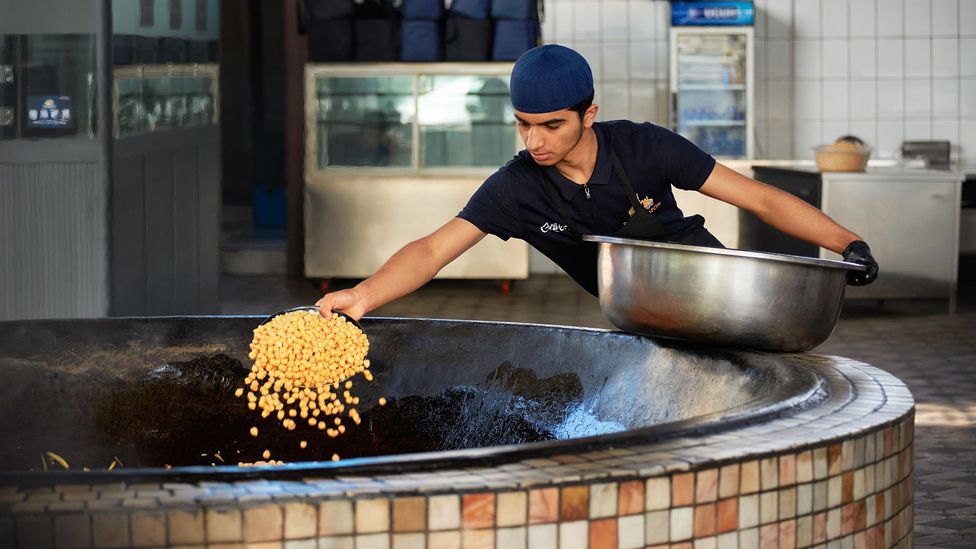
(Credit: Simon Urwin)
Thursdays and Sundays are considered the most popular days to make and eat plov in Uzbekistan. “It’s likely because in ancient times, people from the countryside could only travel to the city bazaars to sell their goods twice a week,” Nuriddinova explained. “So, they had more money on Thursdays and Sundays to be able to afford to buy all the necessary ingredients.”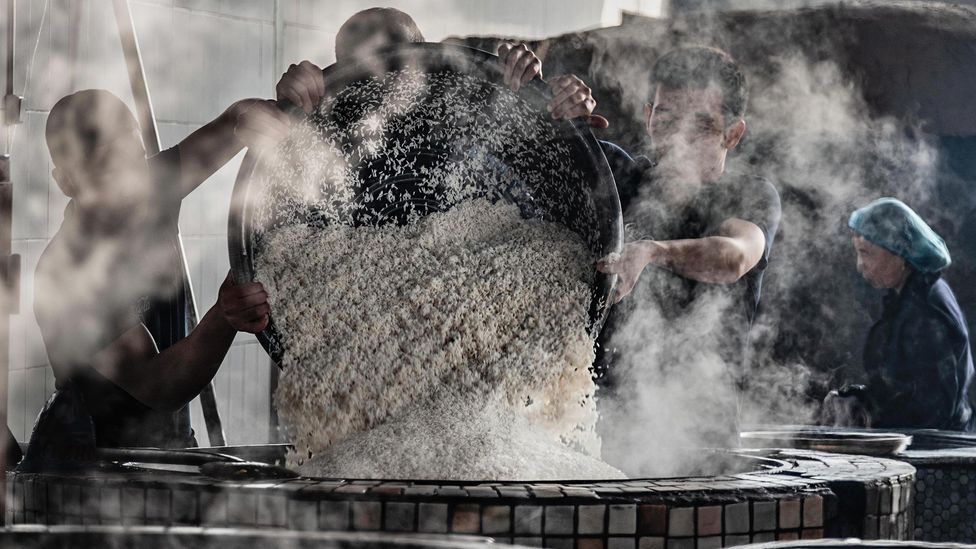
Sagdiyev told me that plov’s prevalence on a Thursday is also because it is thought to have strong qualities as an aphrodisiac, and so is perfect to eat on what is a popular day for conceiving children. He went on to tell me that some men joke that the word plov actually means foreplay, that oil from the bottom of the kazan is sometimes drunk as a form of natural Viagra and that many oshpaz will reserve the best meat for Thursdays to give male customers extra sexual power.
The tradition of conceiving on Thursdays is linked to the country’s strong Islamic beliefs. “It is thought that the Prophet Muhammad was conceived on a Thursday,” Sagdiyev said. “So, if you want your baby to be intelligent, well behaved, be blessed by the angels and have a heart open to receiving God, this is a good day to do it. But only after eating a plate of plov.”
Courtesy: BBC







